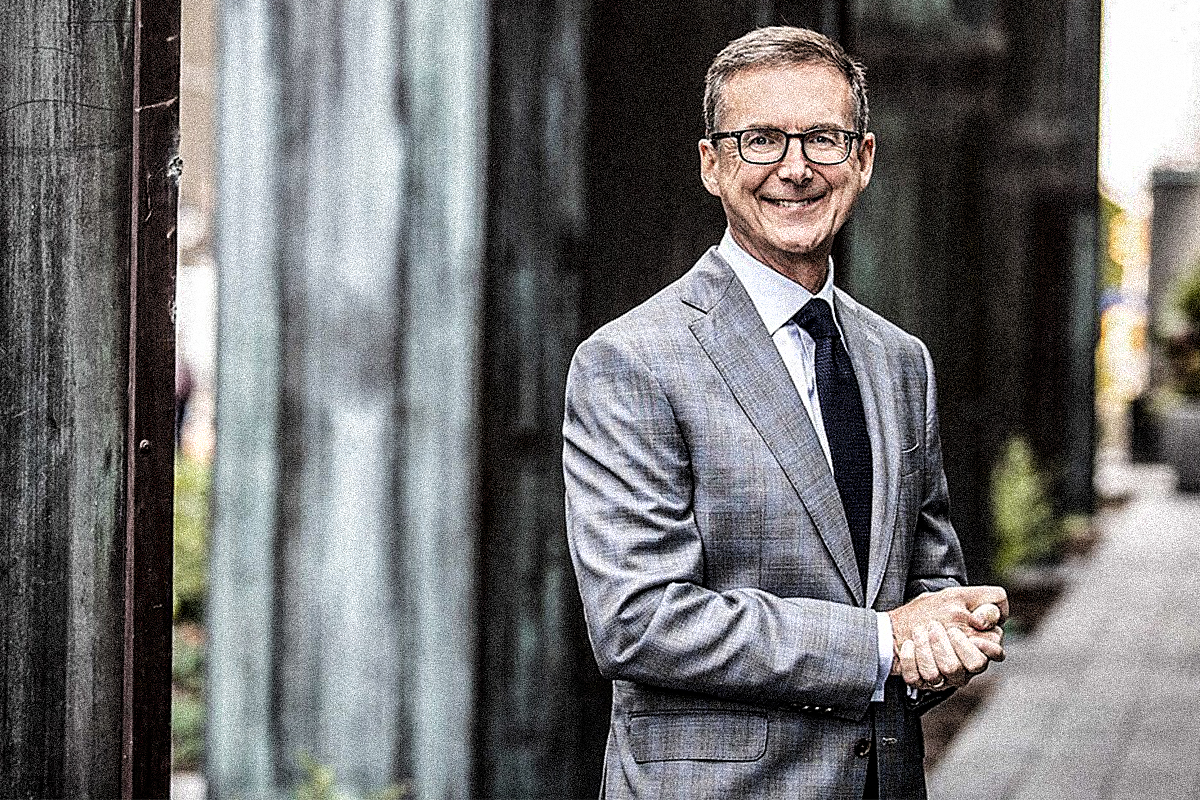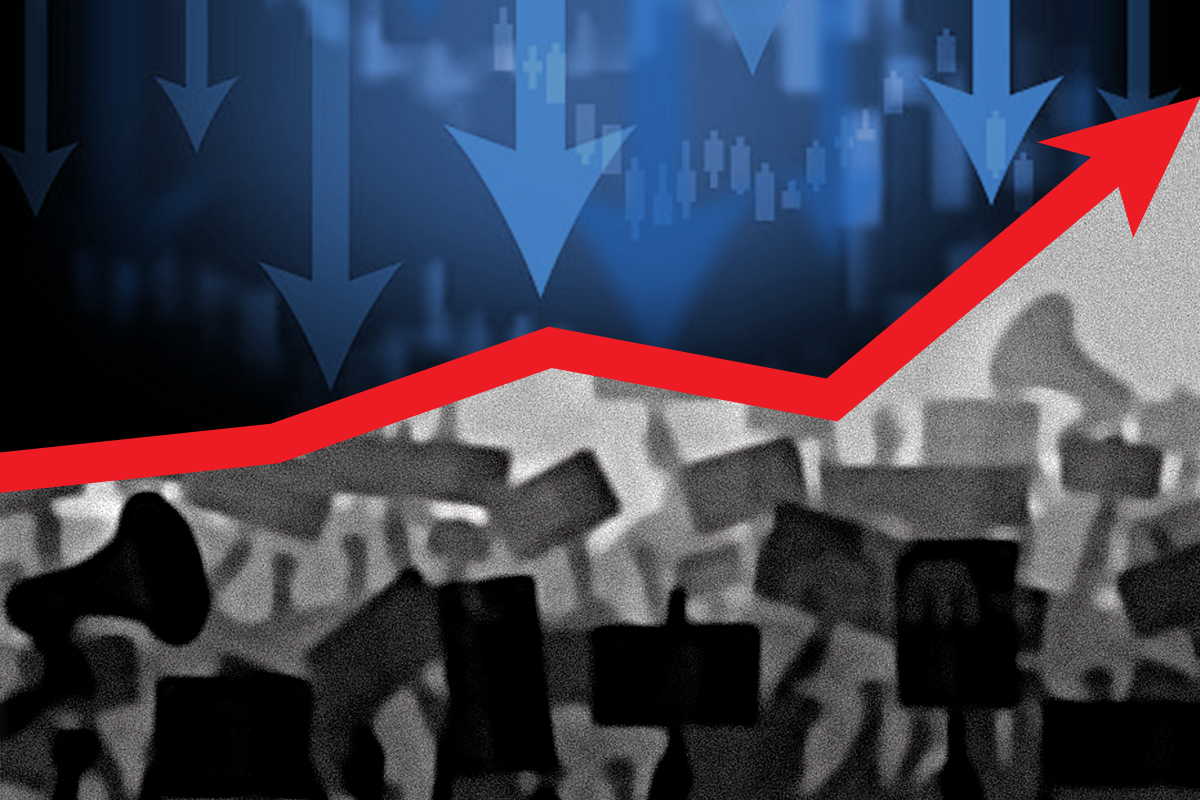
After bailing out the capitalist system in 2020, we are now faced with record-high inflation. In response, the Bank of Canada (BOC) is pursuing policies to make us all poorer by raising interest rates and provoking a recession. But this so-called cure may be worse than the disease.
Lancing the boil
In a strange form of economic chemotherapy, the Bank of Canada believes that we need to accept a bit of pain in the short term to bring down inflation. As if he was lancing a boil and not toying with millions of people’s lives, Bank of Canada governor Tiff Macklem explained that “we don’t want to make this more difficult than it has to be.” He said the central bank’s policy of raising interest rates was “a bit counterintuitive” and recognized that for most Canadians “their rents are going up, their groceries are more expensive, gasoline is more expensive and now their borrowing costs are more expensive.”
Indeed, for most workers who have been struggling with the rising cost of basic goods and services, this policy of raising interest rates seems like a cruel joke. In that same interview, Macklem explained that this policy would “slow spending” by reducing borrowing and suck money out of the economy through increased debt payments.
Connected to this, the Bank of Canada is also toying with provoking a recession to take demand out of the market: i.e. to make you poorer through layoffs and wage reductions. Indeed, Macklem has stated that the current low unemployment rate is “unsustainable” and therefore “the unemployment rate is going to go up.” As Derek Holt, the head of capital market economics at Scotiabank, explained: “They will never say it but I think they’re perfectly willing to court recession in the backs of their minds.” He continued: “I think they are open to it as a necessary evil to combating inflation.”
The supposedly “independent” Bank of Canada has also advised businesses to resist wage increases! Macklem, when speaking to the Canadian Federation of Independent Business (CFIB), a right-wing corporate lobbying group, said: “Don’t build that into longer-term contracts. Don’t build that into wage contracts.”
As we have pointed out elsewhere, this argument is based on the nonsensical “wage-price spiral” argument, which conveniently sidesteps the record profits and hundreds of millions showered on corporations to blame workers for the problems of capitalism. This also conveniently avoids the $45 million in bonuses and pay hikes BOC managers received over the pandemic. This includes $5.2 million in pay raises in 2021 when inflation was obvious for all to see.
But there is a logic behind this callous policy pursued by the Bank of Canada. The capitalists are simply reaping what they have sown from their attempts to avoid the crisis of the system. As the Marxists of Fightback explained in 2020: “Government spending is no permanent solution to the crisis of capitalism and only delays the inevitable, ultimately making the situation worse by adding all sorts of distortions with inflation and massive debt.” You cannot escape the crisis of capitalism; you can only delay it and make the inevitable far worse. This is exactly what we are seeing.
Indeed, the policies implemented to bail out the system in 2020 have led directly to an inflationary crisis, with the rate of inflation hitting a 40-year high of 8.1 per cent this summer. But this number does not provide a clear picture of what is really going on. Inflation is actually much higher for food at 14.5 per cent, and even higher for staples like butter (20 per cent) or pasta (21 per cent).
Inflation is a silent killer, gradually pushing millions of the poorest people to financial ruin. Indeed, 84 per cent of Canadians in an Ipsos poll stated concern about inflation making everyday goods more expensive. This number rises to 92 per cent among young people under the age of 34. Concretely, 17 per cent of households report eating less food, with this figure rising to 30 per cent among households making less than $60,000 per year. This is causing great concern for the stewards of Canadian capitalism who are worried that there could be political ramifications as a result. Macklem recognizes this danger, stating: : “It’s been a long time since we had high inflation and we’re rediscovering that it corrodes the social fabric.”
Is the cure worse than the disease?
The centerpiece of the Bank of Canada’s strategy is an aggressive policy of raising interest rates. Since this summer, the BOC has raised the base interest rate from 0.25 per cent to 3.75 per cent—the steepest increase on record. And this is far from over, as Macklem has made it clear they will continue to aggressively raise interest rates. “Our mandate is price stability, we’re a long way from that mandate,” the BOC governor said. Indeed, even after these drastic increases in the interest rate, inflation has only been brought down from 8.1 per cent to 6.9 per cent in October and November.
But Macklem and the BOC are playing a dangerous game. While it is true that high inflation corrodes the social fabric, ultimately leading to political polarization and class struggle, increasing the interest rates does precisely the same thing but in a different way. Also, while high inflation squeezes the poorest the hardest, high interest rates hurt a wider layer of the population by increasing the cost of their debt. This is now a double-edged sword for many working class families who are suffering both from higher costs for basic necessities and from rising debt payments.
While some people increased their savings during the pandemic, according to Statistics Canada, “On average, regardless of a household’s demographic or economic characteristic, gains in household wealth acquired over the previous year have been erased.” Indeed, just this year according to the Financial Times, Canadian household wealth fell by nearly $1 trillion.
This is the situation in which interest rates are being frantically increased. But what will the result be? While the Canadian economy weathered the last inflationary crisis in the 1980s, this time household debt has increased astronomically. Debt constituted just 50 per cent of household income in 1980, but this has climbed to 177 percent in 2021 and 185 per cent in 2022—the highest ever recorded, making Canadian households the most indebted of the G7 nations. Household debt amounts to more than 104 per cent of nominal GDP. Of particular importance is mortgage debt, which makes up two-thirds of total debt held by Canadians amounting to a whopping $2.1 trillion.

With rising interest rates, this massive sum of money will become increasingly expensive to maintain. Approximately 30 per cent of all mortgages are what are known as variable-rate mortgages. This means that the monthly payments fluctuate with rising interest rates. According to the Bank of Canada, more than 50 per cent of families with variable-rate mortgages have already hit their trigger point, which means that they are not not paying down any of the principle, but are only paying interest. CTV News published a story in November with a few examples of working class people who have already had their mortgage payments increase by upwards of $1,000 per month since the summer! This does not even get into fixed-rate mortgages, many of which will be expiring soon and will have to be renegotiated.
As has been pointed out by Jim Stanford of the Centre for Future Work, this “cure” pursued by the managers of capitalism may be worse than the disease. As Stanford explains:
“Medical students are taught to do no harm to their patient. The zealous monetary tightening being pursued by central banks around the world, with the Bank of Canada leading the way, threatens to do exactly that. The global interest rate shock is pushing economies around the world to the edge of recession, and some financial institutions to the breaking point. And the damage has only just begun. Even rate hikes already in place will cause greater damage in coming months.”
Indeed, the result of these drastic interest rate increases are already having the effect of rapidly increasing inequality. Already Canadian workers’ share of GDP has fallen by two per cent since COVID-19 hit, which amounts to $3,000 each year per worker. On the other end, the share of corporations increased by five percentage points. Macklem’s policies will only serve to increase this gap and worsen inequality.
On the economic front, Canadian employment declined by almost 100,000 jobs from May through September. While Statistics Canada has not released the figures for third-quarter GDP growth, it is possible that the economy has already begun contracting in the third and fourth quarters and therefore we are already in a technical recession.
Ticking time bomb of government debt
But the elephant in the room is the massively inflated government debt. From March 2020 to April 2022, the federal government spent a whopping $576 billion on COVID-19 measures, largely taking the form of various supports to businesses. In order to do this, the government borrowed approximately $700 billion.
The result has been that the federal government debt has exploded from $757.9 billion in 2019 to $1.569 trillion in 2021. Consolidated government debt (including all liabilities for all layers of government) rose to $2.942 trillion in 2021 and we can only imagine that it has gotten worse since then as the government has continued their program of deficit spending. This means government debt is more than 147 per cent of GDP.
Up until now, the government and the Bank of Canada have been defending their policy on the grounds that debt wasn’t a big concern, as debt servicing costs have been low due to the super-low interest rates. But now with interest rates being jacked up by the Bank of Canada, this debt will increasingly become a problem. This is a ticking time bomb which cannot be avoided and will likely lead to a crisis of public finance.
We should remember that government debt was the key question following the 2008-2009 crisis. The bloated debt was becoming unwieldy for governments with debt payments taking up an increasing portion of the budget. The International Monetary Fund pushed an austerity agenda to make workers and youth pay for the crisis and this provoked political explosions all over the world. Occupy Wall Street, the Arab Spring, the Indignados movement in Spain, and the 2012 Quebec student strike were all examples of the political result of capitalist governments’ attempts to offload the effects of the crisis onto the backs of the working class.
Historically, the Canadian ruling class has had room to maneuver. Capitalist politicians and economists have been able to expend the fat built up in the system to avoid the worst effects of the crisis of capitalism and thus largely avoid revolution. But as the capitalist crisis deepens, this fat and therefore the room to maneuver is being whittled away.
While the Liberals under Justin Trudeau have for some time pushed the pause button on the class struggle through deficit spending, the magic money tree will cease to bear fruit and harsh material reality will force itself on the government. Indeed, all the mainstream bourgeois economists have now shifted their tune and are counseling restraint and balanced budgets. As former Bank of Canada governor Mark Carney said, “This is a time to reduce deficits in my opinion, not increase them.”
What is the solution?
As Canadians are caught in the middle of this horrible situation in which their cost of living increases, the Bank of Canada is now the target of widespread criticism. On the right, newly elected Conservative Party Leader Pierre Poilievre made headlines for saying that he would fire Tiff Macklem and “replace him with a new governor who would reinstate our low-inflation mandate, protect the purchasing power of our dollar, and honour the working people who earned those dollars.”
However, if you are looking for a solution to inflation, Poilievre’s cure is definitely more painful than the disease. The thrust of Poilievre’s argument is that inflation is caused by the policies implemented in 2020 and the explosion in government spending. Therefore Poilievre’s solution is mass austerity across the board. In this, Poilievre is in complete agreement with Trudeau, Freeland, and Macklem, who all sidestep the question of the hundreds of billions of dollars showered on corporate Canada. All of these capitalist politicians agree that the working class should pay for the crisis; they just disagree on how. While Macklem’s so-called solution for inflation is increasing interest rates, Poilievre’s solution is cuts to social programs. The difference is that while Macklem wants hundreds of thousands of workers to lose their jobs, Poilievre insists that these lost jobs must be from the public sector. Pick your poison!
On the left, NDP Leader Jagmeet Singh has criticized Macklem and the Bank of Canada for their “one-size-fits-all solution to inflation” which is “laying the groundwork for a recession and making life hard for most people, especially working families and Canadians living on fixed incomes – like seniors living with disabilities.” As Singh explained, “It’s going to mean a very likely recession where hundreds of thousands of Canadians are going to lose their jobs.”
Correctly, Singh has targeted the astronomical profits being raked in by corporate Canada stating, “We see clearly that corporations are making these massive profits, they’re making record-setting profits, and their record-setting profits are directly contributing to the cost of living going up.”
While Poilievre blames government spending for inflation, Singh and the NDP have targeted corporate profiteering, calling it “greedflation.” With this in mind, the NDP is proposing that the “excess profits” companies have made over the pandemic be taxed in one way or another, and that wealth be redistributed to Canadians to help them with the rising cost of basic goods and services.
While the NDP is pointing in the right direction, these measures won’t do anything about inflation. In fact, if the government increases corporate taxes or implements some sort of measure to tax “excess profits,” what is stopping companies from raising prices in response? Furthermore, the capitalists also have the option of taking their money out of the economy if the government imposes too many measures that get in the way of their profiteering.
The fact of the matter is that we cannot control what we do not own. This is why the only solution to the crisis of capitalism is nationalization and socialism. Capitalism is an innately irrational system and the current predicament is just one of the many examples of this. The only “solutions” proposed by bourgeois economists like Macklem or capitalist politicians like Poilievre result in a massive transfer of wealth from the workers to the capitalists.
Rising class struggle
However, there is hope. While the crisis of the capitalist system is unleashing this horrible situation on working class people, it also produces a solution to this problem. No longer is it possible for there to be a compromise between labour and capital. The most clear example of this is to be found in every single collective bargaining process. Where previously one or two per cent wage increases would be grudgingly accepted by the workers, now everyone knows that this amounts to a huge cut in real wages. As we had pointed out in the fall of 2021, inflation results in strikes.

This is precisely what is happening. After a long period of hibernation, the working class in Canada is starting to awaken. According to Statistics Canada, 1,897,867 work days have been lost in 2022 so far due to strike action, an increase of 573,000 from last year and the highest amount since 2009. And the year isn’t even over. This points the way forward. The capitalists and their economists are not going to save us. As Marx said, “The emancipation of the working classes must be conquered by the working classes themselves.”
As the working class flexes its muscles, workers relearn the militant traditions that made unions possible in the first place and won decent wages and conditions. The most notable example of this is with the 55,000 Ontario education workers who have been in conflict with Doug Ford’s Conservative government. Demonstrating the power of the working class, for the first time in Canadian history, a government was forced to retract back-to-work legislation faced with the threat of a general strike.
While this event was unprecedented, we should get used to this sort of thing. We live in unprecedented times. Similar unprecedented movements of the working class are erupting all over the world. From the Starbucks unionization wave in the United States to the militant strikes in Britain which are winning wage increases above inflation, the workers are rising up around the world.
Many people may be despondent or depressed when faced with the capitalist crisis, but as revolutionary Marxists we find our optimism and faith in the working class. Socialism is not some magical utopia dreamed up in the head of Karl Marx, but the logical conclusion of the struggle of the working class. The Marxists in Canada organized in Fightback and La Riposte socialiste are fighting for this perspective in the movement. Join us to fight the darkness of capitalism with a bold and optimistic socialist future!

